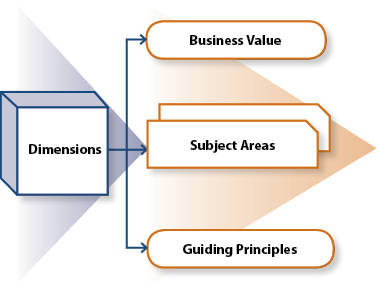… Employs the Right Metrics

“The greatest obstacle to discovery is not ignorance – it is the illusion of knowledge.”
Daniel J. Boorstin
Context
When it comes to business metrics, people at times find themselves in one of two camps – the “system” camp, attributed to W. Edwards Deming, and the “Management by Objectives” camp, attributed to Peter Drucker. We need to spend some time reviewing the perceived differences, to provide perspective to the rest of the discussion.
Deming addresses this topic in his 5th Point: “Improve Constantly and Forever the System of Production and Service”. (I intend to dedicate at least one future newsletter on Deming’s teachings.) For today’s topic, here are a couple quotes that provide the insight we need:
- “Everyone and every department in the company must subscribe to constant improvement.”
- “Meeting specifications does not result in constant improvement. It ensures status quo.”
- “Management by results is confusing special causes with common causes.”
When he referred to the “system”, Deming meant everything that is used to deliver the product or service – people, processes, tools, physical environment, and so on. From the perspective of a better workplace, Deming’s concept of system includes all six dimensions of the Quality Enablement framework: People, Process, Tools, Metrics, Agility and Management Style. His view was that efforts should be focused on constantly improving the system rather than meeting the expected results. He was also adamant that any conclusions made from the measurements need to fully understand the differences between common cause and special cause variations. My own observation is that less than 1% of managers understand how to make that determination.
Peter Drucker, who invented Management by Objectives (MBO), was arguably one of the most influential thinkers and writers on the subject of management theory and practice of the 20th century. With the most common implementation of MBO, managers and their direct reports, at all levels of the organization, have discussions that result in team / individual targets (objectives) that:
- Usually cascade down from higher-level goals;
- Employ SMART objectives, or some variation, to ensure objectives are specific, measurable, attainable, realistic and time-related; and
- Often provide input to annual performance reviews, or at least quotas that are to be met.
As a result, in order to meet those goals (or face the consequences), employees will often do whatever is needed to “make the numbers.” This has the unintended consequences that innovation, quality and productivity all suffer. (For more details, see Organizational Sabotage – The Malpractice of Management By Objective, by Ken Craddock & Kelly Allan.)
As it turns out, Deming and Drucker were much more in sync than the usual implementation of MBO would lead us to believe. They were both professors at NYU, with offices across the hall from each other. When Deming pointed out to Drucker that he was seeing MBO implemented with short-term numerical goals, Drucker did his own investigation. He discovered that not only was MBO not being used correctly, but that it was being used in ways exactly opposite to his intentions.
Metrics Dimension

So what does that mean to us, as we try to use proper metrics to create a better workplace for your teams? For starters, if an organization is using MBO or some variation to measure individual performance, rather than system performance, it will be difficult to change without management understanding and support. And a change to that mindset will likely require outside support.
Let’s now look at the Guiding Principles for the Metrics dimension:
- Measure systems, not people – Both Deming and Drucker put the focus on improving the systems used to deliver the product and service, and both are opposed to measurements that result in personal performance quotas. And the reason is simple – a worker’s ability to produce a quality product is restricted by the system in which he/she operates.
- Differentiate between common cause and special cause variations – Every system has variation, due to the vast number of variables in the environment. Just think of your commute time. It’s likely dependent on traffic flow, accidents, weather, time of day, whether school is in session or whether it’s a holiday, just to name a few. Some of those are common cause variations and some are special cause. From a business perspective, special cause variations may identify exceptional performance or problems at the worker level. Management need to be careful not to infer worker performance, good or bad, from common cause variation.
- Understand and communicate “why” – Sometimes it seems that management ask for data in an almost frivolous fashion. They don’t communicate the “why” of the metrics, and that’s a mistake, for a couple reasons. First, if those who provide the data understand the question the metrics are expected to answer, they may be able to suggest more meaningful data. And second, a valid reason will often motivate the team to provide accurate data. (An effective framework is Goal-Question-Metric.)
- Fewer are better – Too often, organizations find themselves with more metrics than they truly need. This can result in time wasted gathering, preparing and discussing measurements that are unnecessary. Instead, focus on the critical few that can be used to improve the delivery systems and ensure satisfied customers. A discussion on this topic can be found in When Working With Metrics—The Fewer the Better Is the Rule.
With those Guiding Principles, let’s look at the Subject Areas:
- Metrics purpose – We need to understand which metrics are intended to improve the systems used to deliver products and services (enabling), and which are used to measure individual performance (inhibiting). We also discuss other metrics, and how management respond to the metrics as reported.
- Metrics definition and communication – We discuss the goals and questions the metrics are intended to answer, and whether the right metrics are gathered to provide the answers.
- Data collection process – The more automated the collection, the better. That will usually reduce gaming the metric, and not waste workers’ time on non-value added tasks.
- Metrics presentation – Finally, how much time is spent putting together the reports and dashboards? Again, the more automated, the better. We also discuss how the metrics are shared with the appropriate stakeholders.
What’s Next
Next, we’ll discuss Agility, the 5th building block.
Until Then …
“Not everything that can be counted counts, and not everything that counts can be counted.”
Albert Einstein

What are your thoughts? Please share your comments in the block below.